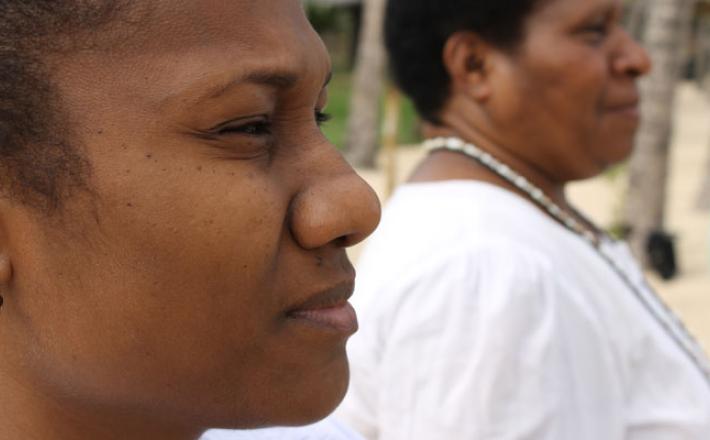Public Perceptions of Women in Leadership
In the 2014 Fiji general election, 14% of elected parliamentarians were women. This percentage represents the largest proportion of women in Fiji’s parliament since independence in 1970. However, it also shows that Fiji is still a long way from parity and lags well behind the global average of 21.8% of elected parliamentarians being women (as at 1 October 2014).
Ahead of the 2014 election, IWDA and the Fiji Women’s Forum conducted research into public attitudes in Fiji towards women in leadership. Public Perceptions of Women in Leadership is the first study of its kind in Fiji exploring community views about the role of women in political leadership. Over 1,200 women and men from rural and urban areas of Fiji contributed their views via survey questionnaires, focus group discussions and key informant interviews. The report provides a snapshot of public attitudes towards women in leadership captured during the lead up to Fiji’s 2014 election.
Photo-Kristy Nowland

In the 2014 Fiji general election, 14% of elected parliamentarians were women. This percentage represents the largest proportion of women in Fiji’s parliament since independence in 1970. However, it also shows that Fiji is still a long way from parity and lags well behind the global average of 21.8% of elected parliamentarians being women (as at 1 October 2014).
Ahead of the 2014 election, IWDA and the Fiji Women’s Forum conducted research into public attitudes in Fiji towards women in leadership. Public Perceptions of Women in Leadership is the first study of its kind in Fiji exploring community views about the role of women in political leadership. Over 1,200 women and men from rural and urban areas of Fiji contributed their views via survey questionnaires, focus group discussions and key informant interviews. The report provides a snapshot of public attitudes towards women in leadership captured during the lead up to Fiji’s 2014 election.
Photo-Kristy Nowland